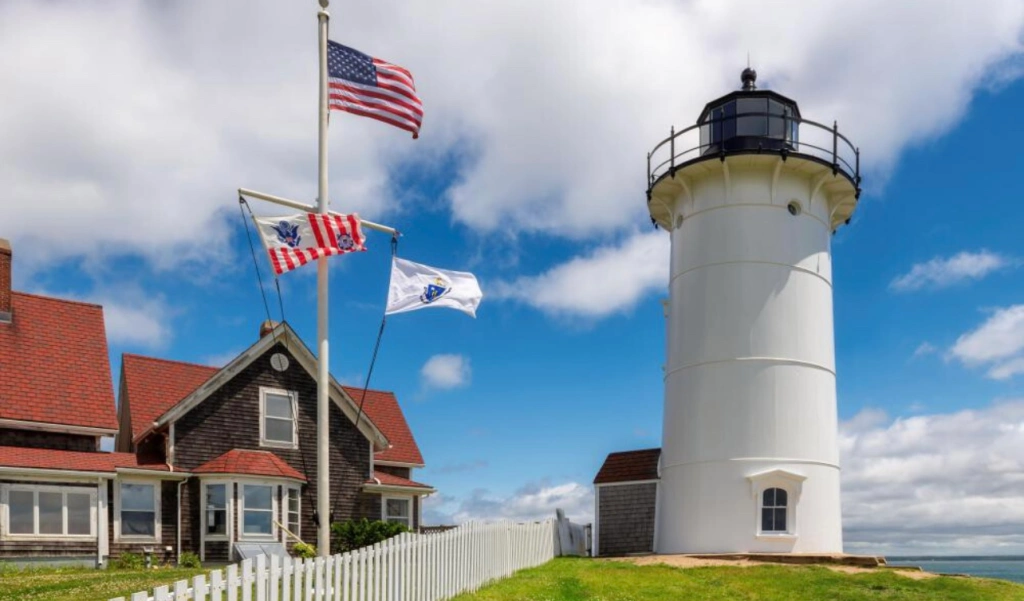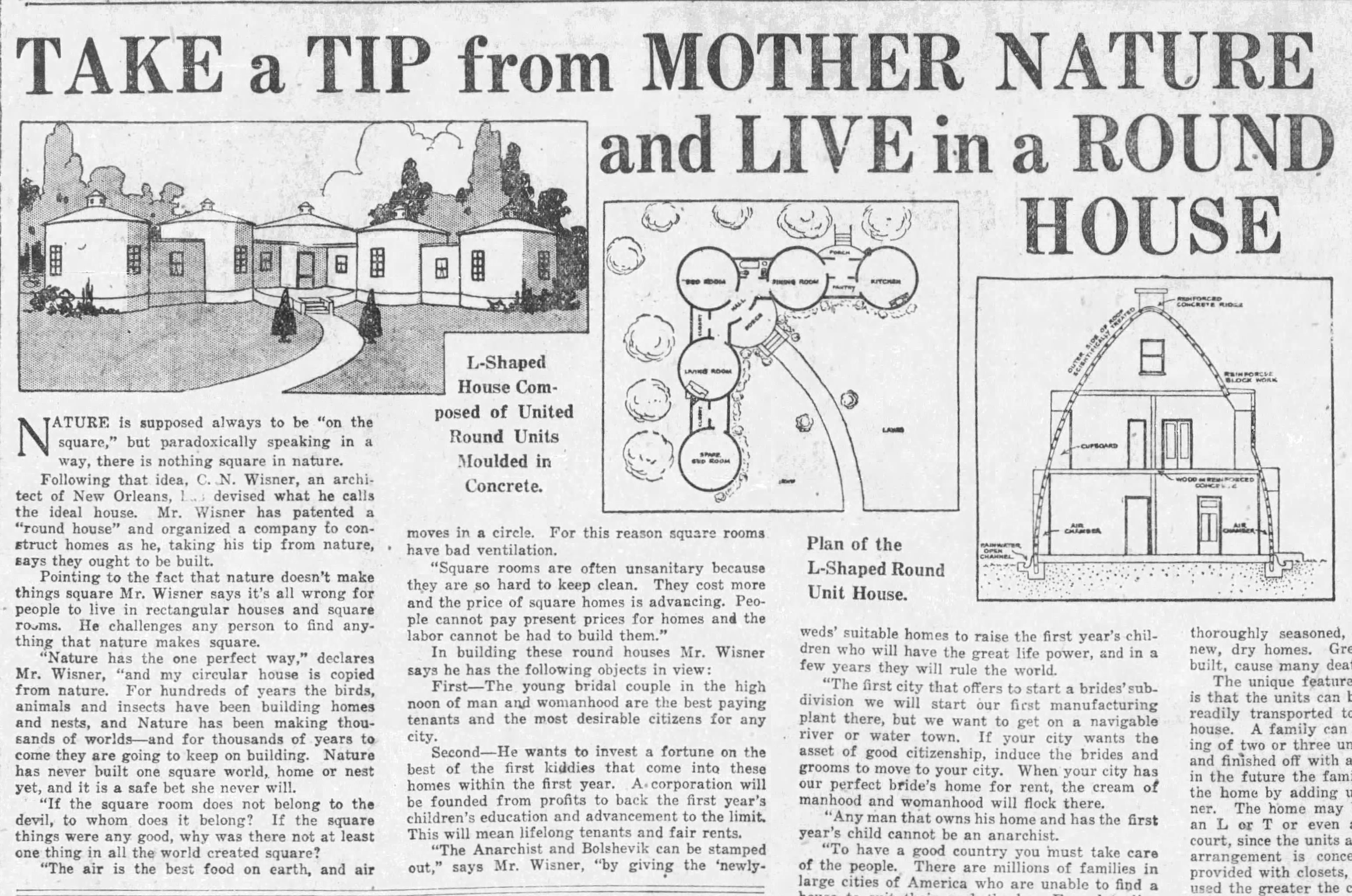
Round houses with privacy, breathtaking ocean views, a fascinating history — and they’re being given away for free — sign me up!

Round houses with privacy, breathtaking ocean views, a fascinating history — and they’re being given away for free — sign me up!
A 1920 article from the Victoria Daily, a Canadian newspaper, described the round houses designed by New Orleans architect C.N. Wisner. Pointing to the fact that “nature doesn’t make things square,” Wisner argued that it was wrong for people to live in square rooms in rectangular houses –

Russian designers Nasya Kopteva and Sasha Braulov of 52 factory have created a paper clip holder that pays homage to the Melnikov House, an icon of Russian constructivist architecture. The item is part of a 10-piece collection of desk accessories, each corresponding to a landmark of the Russian avant-garde.

Designed in 1927 by Russian architect Konstantin Melnikov, the double-cylinder house was revolutionary in its form, details and use of materials. It was built as the architect’s private residence, and he lived in the house — one of the few privately owned houses left in Moscow — until his death in 1974.
“The house saved him,” his son Viktor told the New York Times in 1990.


The F-House cell block at Stateville Correctional Center, in Illinois, is the last remaining panopticon-style prison building in the United States –
 The round plan of a panopticon, as designed by 18th/19th century British philosopher and criminologist Jeremy Bentham, was meant to allow the guards, stationed at the center of the circle, to monitor prisoners without the prisoners themselves knowing whether or not they were being observed. Bentham once described the panopticon as “a mill for grinding rogues honest.” All the flowers in the world cannot disguise the design’s essentially coercive function.
The round plan of a panopticon, as designed by 18th/19th century British philosopher and criminologist Jeremy Bentham, was meant to allow the guards, stationed at the center of the circle, to monitor prisoners without the prisoners themselves knowing whether or not they were being observed. Bentham once described the panopticon as “a mill for grinding rogues honest.” All the flowers in the world cannot disguise the design’s essentially coercive function.
“We are living in a spheroidal universe. A round spheroidal world—not a cubicle sugar lump world.”
— Buckminster Fuller, in 1929, presenting an early model of the Dymaxion House.
Vintage postcards of round houses from Somerville, Massachusetts to Nunspeet, Holland. Only two of these homes are still standing –
“Modernism is not in the dress of the Europeans . . . or in the square houses with flat straight wall-surfaces, pierced with parallel lines of windows, where these people are caged in their lifetime . . . These are not modern but merely European. True modernism is freedom of mind, not slavery of taste.”
– Rabindranath Tagore, lectures in Japan, 1916-1917.
The late Bruce Chatwin gave a characteristically entertaining report of his 1973 visit with Konstantin Melnikov, at Melnikov’s cylindrical house in Moscow. The account is worth reading in full –
In January 1973, on a morning of Stygian gloom, I called on Konstantin Melnikov, the architect, at his house on Krivoarbatsky Lane in Moscow . . . . [M]y visit to Mr Melnikov was the high point of the trip, since, by any standards, the house itself is one of the architectural wonders of the twentieth century.
. . . . Melnikov’s house — or rather pavilion in the French sense — is set well back from the street, a building both Futurist and Classical consisting of two interlocking cylinders, the rear one taller than the front and pierced with some sixty windows: identical elongated hexagons with Constructivist glazing bars. The cylinders are built of brick covered with stucco in the manner of Russian churches. In 1973 the stucco was a dull and flaking ochre, although recent photos show the building spruced up with a coat of whitewash. On the front façade above the architrave are the words KONSTANTIN MELNIKOV ARKHITEKTOR — his proud and lonely boast that true art can only be the creation of the individual, never that of the committee or group.
If you happen to be in Moscow, drop everything and visit the Vkhutemas gallery, on Rozhdestvenka Street, where you can join the fight to preserve the iconic Melnikov House –
The innovative cylindrical house, designed in the late 1920s by Russian avant-garde architect Konstantin Melnikov, is at risk of destruction. A group of developers — the almost-too-perfect-to-be-real Trust-Oil company — is building a large commercial complex just behind the house, with multiple levels of underground parking; the construction is reportedly causing the house’s foundation to sink. Preservationists claim that the work has opened numerous serious cracks in the house’s load-bearing walls; some fear the structure will collapse.
Tonight’s gallery event aims to draw attention to these threats. It will include a film, an interactive performance, and a press conference about the ongoing effort to protect the Melnikov House from destruction.
If like most of us you’re not in Moscow, you can still help. First, learn about Melnikov, his house, and his larger body of work; peruse Melnikov’s models and sketches; listen to a reading of the late Bruce Chatwin’s account of a 1973 visit with Melnikov; immerse yourself in Russian Constructivism, and then — if you’re duly impressed — consider signing a petition urging the mayor of Moscow to take immediate action to preserve the Melnikov House. Or visit the Constructivist Project, which advocates for the protection of the Melnikov House and other Russian modernist buildings, and learn what else you can do.